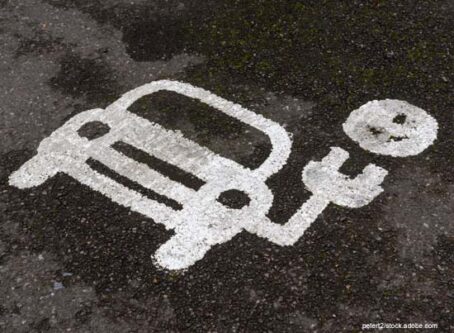House committee roundtable addresses autonomous tech in trucking industry
As both the House and Senate have autonomous vehicle bills sans trucks floating around Congress, the issue of what to do with heavy commercial vehicles and AV technology is still on the table. Those issues were addressed during a House Transportation and Infrastructure Committee roundtable on Thursday, Dec. 7.
Committee members discussed emerging technologies in the trucking industry with four stakeholders:
Greer Woodruff, senior vice president of safety, security and driver personnel for J.B. Hunt, on behalf of the American Trucking Associations;
Susan Alt, senior vice president of public affairs for Volvo Group North America;
Jane Terry, senior director of government affairs for National Safety Council; and
Larry Willis, president of the Transportation Trades Department of the AFL-CIO.
The two main themes throughout the discussion were jobs and regulation.
Job displacement
Several committee members were concerned about the potential of job displacement as a result of new autonomous technologies in commercial vehicles. Of the four participants, Willis expressed the most concern in this topic.
“We have serious concerns the impact it’s going to have on employment on the bus and truck sector,” Willis said. “We don’t think our economy is prepared to absorb the type of job dislocation and downward pressure on wages that we think we can see.”
Willis said that 3 million to 4 million driving jobs could be in jeopardy. Policymakers and stakeholders will need to find the right balance between moving technology forward and issues surrounding employment.
Rep. Eleanor Holmes Norton, D-D.C., brought up the issue of a driver shortage. Woodruff acknowledged the shortage and said it will likely get worse with an aging workforce and higher demand from an improving economy. He said automation can make trucking more attractive to younger people while allowing older drivers to extend their career with a less physically demanding workload. Woodruff said autonomous vehicle technology could have trucks drive themselves along the interstate and have staging areas for human drivers to complete trips off the highway.
Willis took exception to Woodruff’s logic.
“It’s a difficult argument for the industry to make to say that this type of technology is not going to replace jobs where the driver is dispensable yet it is somehow a solution to the driver shortage they keep talking about,” Willis said. “It’s sort of difficult to have that both ways.”
Need fair compensation
The Owner-Operator Independent Drivers Association does not believe there is a driver shortage. Rather, OOIDA does believe there is a problem with fair compensation for drivers, resulting in a high turnover rate.
Willis said that better pay is needed to attract the younger generation, not bells and whistles with new technology.
One aspect of jobs that most agreed on is that many drivers are underpaid. Woodruff said that compensation needs to be considered moving forward. Willis took that one step further and suggested that lawmakers have a responsibility to workers during the transition to automated vehicles.
There was some debate about the legitimacy of job displacement. Rep. Lloyd Smucker, R-Pa., found the argument to be valid.
“I don’t think we’re being realistic if we’re saying it’s not going to impact jobs,” Smucker said.
When Smucker asked for specific studies regarding job displacement and technology, Willis mentioned that scholars and academics have noted that when technology takes over jobs, it takes workers decades to recover and “they never really do.”
In the end, the panel agreed that some type of training should be offered to drivers.
Regulations
Rep. Brian Babin led off his questions by bringing up the ELD mandate. Babin said that the ELD mandate will likely result in fewer drivers, not more. He used this example to highlight the consequences in mandating technologies on commercial vehicles.
“If we keep creating mandates for (truckers) I think it’s going to make it very difficult for small business people, independent truckers, to go into business for themselves,” Babin said.
Babin asked the panel whether or not future mandates will require the “highest level of necessity,” like seat belts and airbags, rather than optional technologies to make lives better or easier. Babin said those that like ELDs should keep it, but don’t mandate it.
As expected, Woodruff disagreed with Babin’s ELD comments.
“I knew you would, Mr. Woodruff,” Babin replied.
Woodruff suggested that new technologies can be integrated through voluntary adoption. After data is compiled from voluntary adoption, a potential mandate should be considered. Jane Terry of the National Safety echoed that sentiment by saying the council supports mandates for “proven technology.”
On a similar analogy, Rep. Doug LaMalfa, R-Calif., grilled Woodruff on ATA’s stance on a speed limiter mandate. LaMalfa pointed out that there is a stark difference in opinion between ATA and independent owner-operators. Furthermore, LaMalfa said that research reveals that speed limiters can lead to an increase in crashes. The point he was trying to get across is that a one-size-fits-all mandate does not necessarily work.
Smucker told the panel that he thinks the role of government is to stay out of the way and allow private businesses to compete in the free market.









